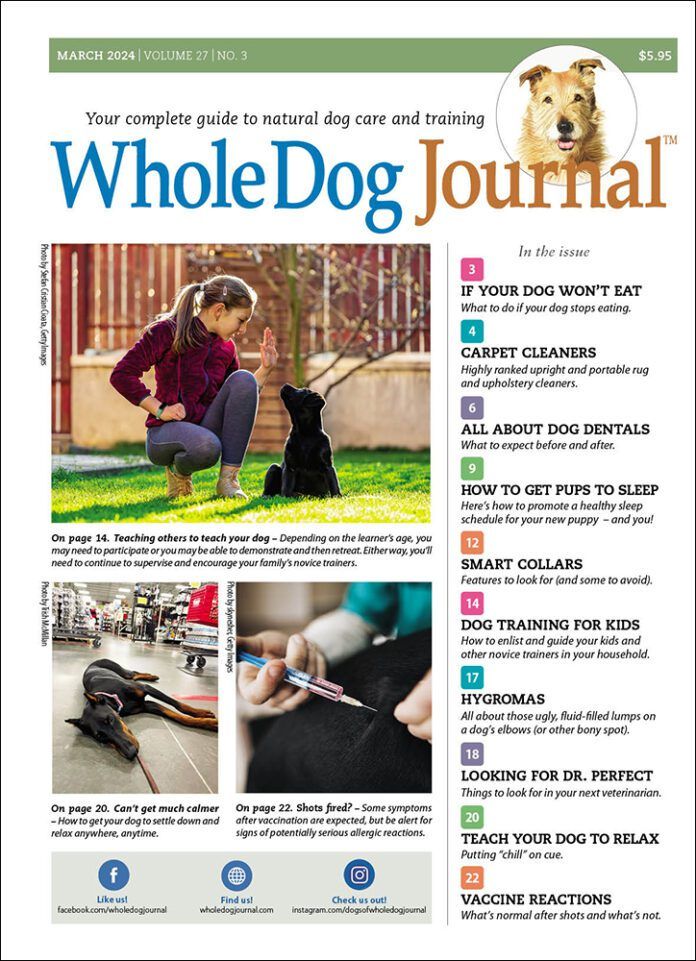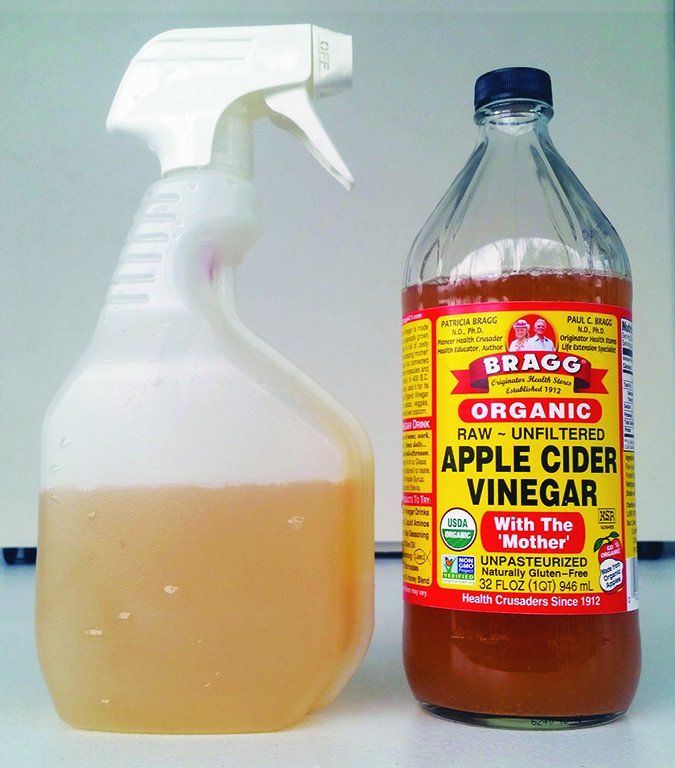- If Your Dog Won’t Eat
- Carpet Cleaners
- All About Dog Dentals
- How to Get Pups to Sleep
- Smart Collars
- Dog Training for Kids
- Hygromas
- Looking for Dr. Perfect
- Teach Your Dog to Relax
- Vaccine Reactions
Download The Full March 2024 Issue PDF
How Often Do You Walk Your Dog?
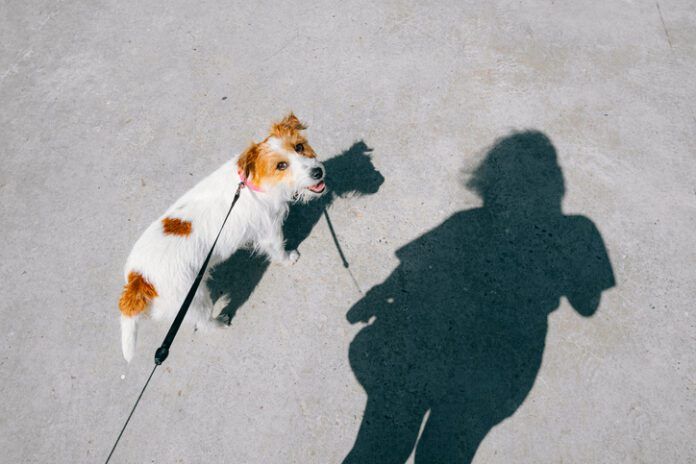
I read an article in the Washington Post the other day about walking your dog. The gist of the article was that failing to take your dog on walks can be detrimental to your dog’s physical and emotional well being.
I agree – and I suspect the majority of dog owners don’t walk their dogs regularly.
I’m not judging anyone. Even I, a dedicated dog owner who strongly believes in the benefits of dog walking, who loves going for walks with my dogs, who lives in a beautiful area for walking, who is healthy and has healthy dogs . . . even I often fail to walk my dogs.
I was a lot better about walking my dogs regularly when 8-year-old Woody was young and needed daily exercise in order to behave well at home. When he was a youngster, he needed double-digit miles per week of off-leash running if I didn’t want the house to be chewed apart. Today, though, he’s perfectly behaved whether we get out for walks or not.
Two-year-old Boone has been lower-maintenance. He would love more walks than he gets, but he doesn’t fall apart behaviorally if he doesn’t get them.
I do have the advantage of living on two completely fenced acres, and my dogs can run and play outside any time they want. They do play daily chase games and do a few laps of the property every day – but the overall mileage of those activities isn’t anything like a walk. And the stimulation they get from exploring our property isn’t nearly as enriching as going someplace else and sniffing new places and seeing new things.
Is it the fact that I live in a rural area? I feel like it’s far more common for people who live in urban and suburban areas to walk their dogs daily than for us rural dwellers?
Does the number of dogs that a person owns affect how often they get walked? I wonder if owning more than one dog decreases or increases the number of walks the dogs receive.
What about you guys? How often do you walk your dogs, and what factors affect your dog-walking habits?
How to Comfort a Dog in Heat
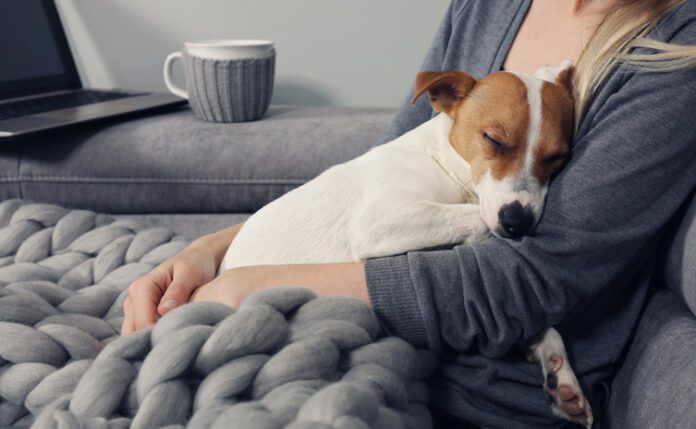
Intact (unspayed) female dogs typically have two heat cycles per year, driven by rising and falling levels of estrogen and progesterone. These changes in hormone levels can change how your dog feels physically and emotionally. In the days leading up to the start of her heat cycle, a female dog may start to act skittish and startle easily. She may start to act clingy and always want to have you in sight. Her appetite may decrease and she may become less active.
Comfort a dog in heat by giving your dog a little extra attention during her heat cycle. Make sure she continues to eat but don’t force her to eat more than she wants. Let her sleep if she needs it and keep noisy distractions to a minimum.
Once her heat cycle has started, your dog will begin spotting blood from her vulva. She may spend a lot of time licking her vulva to keep that area clean. Dogs with thick fur may require your assistance with keeping the fur around the vulva free of discharge.
You can help support her by making sure that her bedding is always clean. Consider laying an absorbent pad (like a pee pad) on top of her bedding to absorb discharge from her vulva. Dogs who experience moderate to heavy discharge may benefit from wearing a sanitary diaper until the amount of discharge begins to decrease.
How to prevent unwanted pregnancy during your dog’s heat cycle
A dog’s heat cycle typically lasts about two to three weeks. There are two phases to a dog’s heat cycle. Intact male dogs will be attracted to her during both phases, but she will become receptive to mating and can become pregnant during the second phase.
If you do not want your dog to become pregnant, do not leave her unattended outside during the second phase of her heat cycle. Avoid off-leash walks and dog parks. And most importantly, do not let her out in the fenced-in yard without direct supervision. A fence is no match for an intact male dog who wants to mate with your female dog!
Since her outdoor activities will likely be curtailed during her heat cycle to prevent mating, she will need additional indoor activities to keep her occupied. Consider getting her an interactive puzzle toy to provide her with both mental stimulation and physical activity. Play indoor games of fetch or hide training treats inside boxes or blocks that she can search for and find.
The best way to provide comfort to a dog in heat is to not have her go through a heat cycle at all! Having your dog spayed eliminates the risk of developing pyometra (a life-threatening infection of the uterus) and minimizes the risk of developing mammary cancer. Talk to your veterinarian about the best time to spay your dog.
What Is a Dog Training Platform?
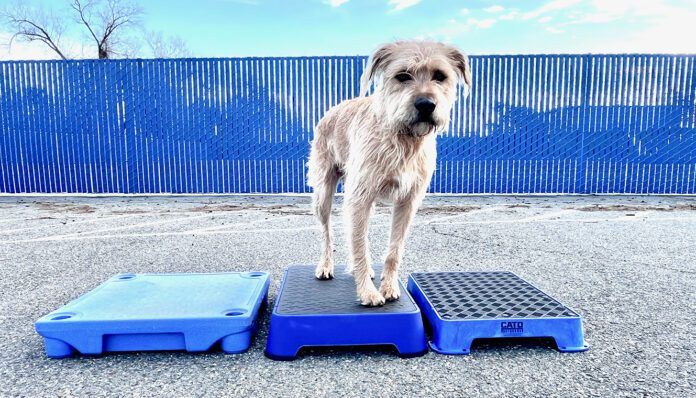
Many trainers use a platform or a box, also called a “place board,” to help a dog understand the concept of remaining in a designated spot. In the beginning stage of training, the dog is encouraged to step onto the platform or box, either with a food lure or toy, and reinforced whenever his feet come into contact with the platform. Reinforcement stops or is withheld when the dog steps off the platform. The difference in the sensations of stepping or being on and stepping or being off the platform helps create bright-line criteria – for both the handler and the dog – of what will be reinforced and what will not.
Most dogs quickly start volunteering to step onto the dog training platform more frequently and remaining there for longer periods of duration – which the handler continues to reinforce with food treats. Then the handler can start using cues and reinforcement to shape the specific behaviors she wants from the dog.
Behaviors that can be easily taught using a dog training place board include:
- Stand/Stay
- Sit/Stay
- Down/Stay
- Back Up (dog is encouraged to step onto the platform with his back feet only)
- “Front” (a behavior that is used in obedience competition, requiring the dog to come directly to the handler and sit very straight close to and in front of the handler)
- “Return to Heel” (again, used in obedience competitions, requiring the dog to leave the front position, walk clockwise around/behind the handler to a position at the handler’s left side, i.e., the “heel” position)
- “Side” or “Swing Finish” (another obedience move where the dog pivots counter-clockwise from a front position to the heel position on the handler’s left side)
To start teaching each of these behaviors, the platform is placed in the goal location (relative to the handler) and the dog is lured or shaped into the desired position, and reinforced for reaching that location, going to the location on cue, remaining in that location on cue, and eventually, going to and remaining in a certain position in that location on cue.
Denise Fenzi, founder of Fenzi Dog Sports Academy, an online school dedicated to providing high-quality instruction for competitive dog sports, frequently uses platforms when training her dogs. “I use them because it’s black and white for the dog,” she says. “It’s easier at first for them to learn Stay by staying on the platform as opposed to staying in an undefined spot on the ground. The same attribute makes place boards hard to beat for teaching the dog precision work – where the dog needs to be in a very specific position.”
Fenzi has another tip about using platforms to work on the “Stay” behavior. She often “sends” her dogs to a place board from a distance, rather than positioning them on the platform and then walking away. This way, the act of walking away doesn’t predict a recall or draw the dog off the platform to follow the handler.
Dog Training Platforms for Fitness

You can also use a dog training platform to lead your dog through exercises that will build his fitness, coordination, and flexibility. Veterinary physical therapy or fitness instructors often use dog training platforms to encourage the dog to step up and down and to perform certain stretches in a slow, controlled manner.
Cato Outdoors, maker of the Cato Board dog training platform, has a collection of videos that show you how a platform can be used for dog fitness exercises here.
Best Dog Training Platforms
There are three companies that make place boards for dog training:
Blue-9 is the maker of a platform it calls the KLIMB, a 24” by 24” training platform that can be used without legs for a height of 4 inches, with optional short legs (set of four sold separately) for a height of 6 inches, or with the standard (included) legs for a height of 12 inches. KLIMBS can be attached to other Klimbs to create larger platforms, and can even be stacked securely to create taller platforms. $160. Blue-9 offers a very good (and free!) guide to teaching your dog to use a platform. It can be downloaded from the Blue-9 Resource Library; click on KLIMB Training Quick Start Guide.

Whole Dog Journal is reader-supported. If you purchase through links on our site we may earn a commission. Whole Dog Journal does not accept money for its food and product reviews.
The next two dog training platforms are rectangular, which helps dogs hold their position (being narrower, it’s harder for a dog to turn around while staying on the board):
Cato Outdoors makes the Cato Board, which comes in two sizes, 11 different colors, and can be ordered with either a rubber non-slip surface or an artificial turf surface. The original board measures 24” by 16”, is 3.5 inches tall, weighs 7.7 lbs, and costs $79. Very large or long dogs might be better served by the Cato Board XL, which is 36” by 12” inches and 3.5 inches tall; it sells for $95.
Huntmark’s Dog Training Place Board is available in dark blue or “optic yellow.” It measures 28” by 18” and is 4.5 inches high. It can support up to 200 pounds, and has non-skid rubber feet and a raised rubber traction surface. It weighs 8 lbs 11 oz. $86.
Is Coconut Water Good for Dogs?
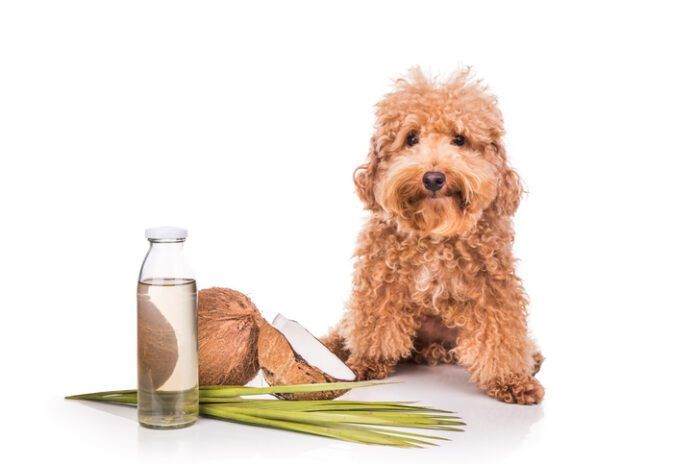
Dogs can have coconut water and they usually enjoy it because of its sweet taste. However, it shouldn’t replace plain water as your dog’s primary source of hydration though it can safely be offered in small amounts or added to food or water. Coconut water can help dogs recover from vigorous exercise, especially in hot weather, and it is said to aid digestion. As with any new food, start slowly and monitor your dog’s response.
There are many brands of coconut water, but plain coconut water that has nothing added is the safest for dogs, as some products contain added sugar, fruit purees, or other ingredients that contribute to weight gain. Check labels to be sure the brand you’re looking at does not contain harmful ingredients like xylitol, which is toxic to dogs.
While figures vary, the average cup (245 grams) of 100% coconut water with nothing added contains about 45 calories, 40 to 65 milligrams (mg) of sodium, 10.4 grams of carbohydrates, 9.6 grams of sugar, 0.5 grams of protein, 24 mg of vitamin C, 400 to 600 mg of potassium, and 0.5 mg of manganese. Magnesium, calcium, iron, phosphorus, zinc, and copper are also present in small amounts. Plain coconut water contains zero fat or fiber. Its sodium and potassium are electrolytes, which are minerals that carry an electric charge. They help regulate hydration, maintain pH balance, transmit nerve impulses, and facilitate muscle responses.
If your dog has been diagnosed with kidney disease, consult with your veterinarian before offering coconut water. In some cases, kidney disease depletes potassium so it’s a helpful supplement, but in other cases, coconut water’s extra potassium may be detrimental.
In addition to the water it contains, fresh coconut meat can be a tasty treat for you and your dog to enjoy together. Just be careful when you open the coconut; the husk and shell of the coconut are potential choking hazards. Dogs can also eat dried coconut in small amounts as a treat, but just as with coconut water, check the ingredients for added sugar, which your dog does not need.
Dog Heartworm Symptoms and Prevention
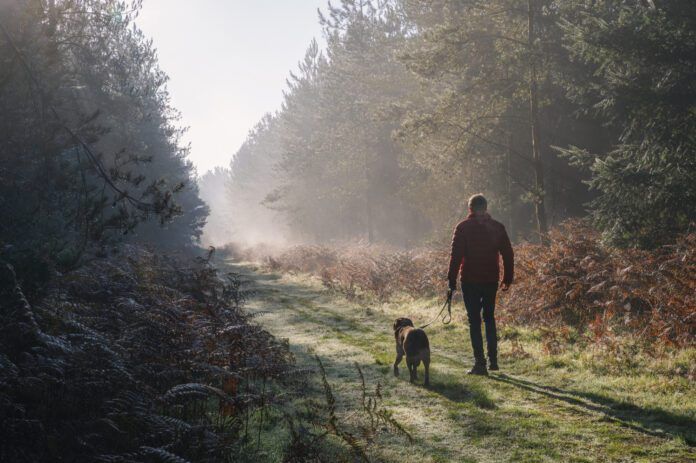
Heartworm in dogs is deadly and spread by the bite of a mosquito infected with Dirofilaria immitis, which is a parasitic roundworm that migrates to the heart and lungs. Early on, symptoms of heartworm infection are difficult to notice. As the disease progresses, your dog will find it difficult to breathe, as his lungs and heart struggle against the heartworm invasion to support his life.
Symptoms of Heartworm in Dogs
The symptoms seen in a dog with heartworm vary with the stage of disease and the severity of the infection. Early on, your dog may not show any signs of heartworm disease. As the disease progresses, signs related to your dog’s heart and lungs will become apparent and deadly.
The symptoms of heartworm often develop like this:
- Lethargy: Your lively, athletic dog may simply have less “get up and go.”
- Persistent Cough: Next, a mild cough without any nasal or ocular discharge may appear.
- Loss of Appetite: The cough is often accompanied by weight loss and a decrease in appetite.
- Severe Weight Loss: Heart failure progresses and weight loss becomes severe (called cardiac cachexia).
- Swollen Abdomen: You might notice a distended abdomen as fluid backs up from the stressed heart.
- Worsening Cough: The cough will become more frequent, and exercise intolerance will be more pronounced.
- Difficulty Breathing: The dog begins to struggle to breathe as the heart and lungs try to get oxygen out to all his tissues.
In rare cases, a large number of heartworms will disrupt blood flow within the heart causing a cardiac crisis known as caval syndrome. Characterized by symptoms including collapse, pale gums, rapid heart rate, and fast, irregular breathing, caval syndrome requires urgent surgical intervention to remove the worms. The surgery is risky and the prognosis for dogs with caval syndrome is extremely guarded.
Heartworm can be treated, but damage already done to the heart tends to remain. Treatment is not without risk but without treatment, your dog will die of heart failure. Clearly, this is a disease it is best to prevent.
How Do Dogs Get Heartworm?
When an infected mosquito bites a dog, it injects an immature heartworm stage called microfilaria into the dog’s bloodstream. The microfilaria eventually develop into mature heartworms (they look like long, white worms) that usually reside in the dog’s heart.
Heartworms are found in every state, and the Companion Animal Parasite Council tracks where they are. You can track forecasts for heartworm infections here.
Heartworm Prevention
Start prevention following an annual screening test to verify your dog does not have heartworm already. The FDA-approved heartworm preventives are ivermectin, milbemycin oxime, moxidectin, and selamectin. These are all noted by the American Heartworm Society aseffective and safe medications when used as directed. Most of these are given as monthly oral doses. Treatment is recommended year-round.
Note: Some dogs (mainly collies, herding breeds, and mixes with these breeds) react to ivermectin due to a genetic defect known as MDR1. Options without ivermectin are best for those dogs, although the dosage in most monthly preventives is low enough to avoid toxicity.
How to Do CPR On a Dog
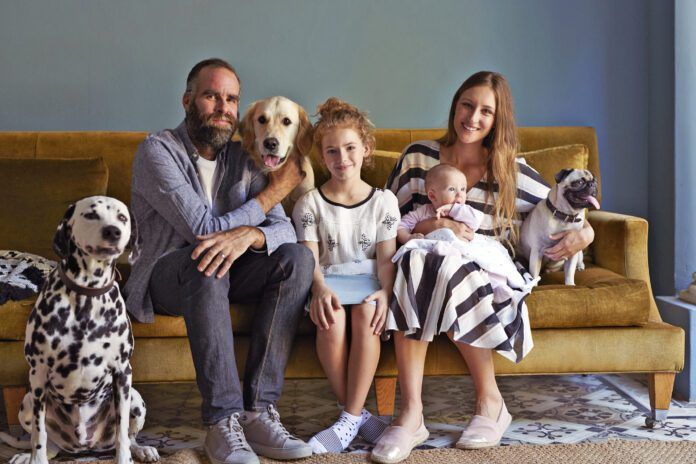
If your dog is not breathing, knowing what to do and how to do it before you encounter such a situation could truly mean the difference between life and death. Rescue breathing is a critical part of CPR (cardiopulmonary resuscitation) for dogs.
Dog owners who know how to perform rescue breathing, or CPR on a small dog versus CPR on a large dog, very well may save their own dog’s life. The Cornell University College of Veterinary Medicine’s Baker Institute of Animal Health has produced an outstanding graphic that should be on every dog owner’s refrigerator. ProCPR placed an excellent video on how to give CPR to your animal.
What If It Happens at Home?
Can you do it? You have nothing to lose by trying. A study published in Frontiers in Veterinary Science showed that mouth-to-nose rescue breathing was better than nothing and certainly worth a try if your dog is not breathing.
Furthermore, the veterinary CPR guidelines (RECOVER Initiative) state, “It is reasonable to recommend mouth-to-snout rescue breathing for dogs and cats with respiratory arrest or with cardiopulmonary arrest in a 30:2 ratio with chest compressions when endotracheal intubation is not available.”
What does this mean? Well, “30:2” means for every 30 chest compressions you give 2 breaths. You should be giving approximately 100 to 120 chest compressions (2 compressions every second) and approximately 10 breaths per minute (1 breath every 6 seconds).
Mouth-to-nose rescue breathing is not perfect. Some of the problems that arise are gas distention of the stomach, regurgitation of stomach contents, and ineffective breaths.
To administer breaths as effectively as possible, extend the head and neck as much as possible and seal the dog’s lips as tightly closed as you can to prevent air from escaping. You must blow with enough sustained vigor to see the dog’s chest rise and fall. This tells you the lungs have expanded.
Note: If the dog is choking, you need to perform the Heimlich Maneuver on your dog to clear the airway.
CPR on Big Dogs
For chest compressions in big dogs, with one hand on top of the other and the dog on his side, push hard on the lower rib cage behind the front legs. You must push hard enough to compress the rib cage to effectively push blood through the heart.
CPR on Small Dogs
For chest compressions in a small dog, it is sometimes better to use your thumbs. With the dog on his side, one hand grabs the dog’s top line, the other hand grabs the lower chest. With your thumbs facing each other and flat against the ribs behind the elbow start compressions, again with enough pressure to compress the rib cage.
Rescue breathing and chest compressions must be continued until either the dog starts breathing on its own or you arrive at the veterinary emergency center and the professionals take over.
If your dog goes into cardiac and/or respiratory arrest at the veterinary clinic, an endotracheal tube will be inserted into the trachea and rescue breathing will be administered using 100% oxygen. This is obviously the ideal situation, and the most effective way to provide rescue breathing during CPR. Performing CPR while you’re on route to the veterinary clinic is critical. Call ahead to be sure they’re open and available.
The Giardia Parasite in Dogs
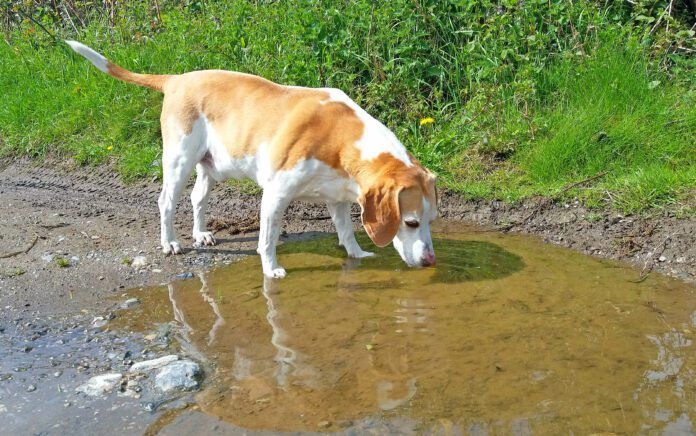
The protozoal parasite giardia in dogs can be a minor nuisance or a royal pain to treat and totally clear. Symptoms of giardia in dogs include diarrhea, maldigestion, and malabsorption. Diarrhea is often intermittent, based on the parasite’s life cycle. Giardia is contagious in dogs as long as giardia cysts remain in the feces. It can be difficult to clear the infection.
Diagnosis of Giardia in Dogs
Stools from dogs with giardia may be soft or watery or appear slightly green. Occasionally, blood or mucus may be noticed. Healthy adult dogs seem to be somewhat naturally resistant, while puppies may fail to thrive.
Diagnosis of giardia is generally by a fresh fecal exam or sending samples off to check for giardia antigens. Due to the intermittent shedding, the diagnosis can be missed, especially by fresh smears only.
Giardia Treatment
There is no FDA-approved treatment for giardia in dogs. Metronidazole and febendazole are often used off-label separately or together.
A dog may need repeated giardia treatments to totally clear the infection as some resistance appears to be developing. Symptomatic treatment for giardia diarrhea includes adding fiber to your dog’s diet until his stools are normal. Follow-up veterinary fecal checks for giardia are critical to ensure you have rid the dog of the giardia parasite.
Giardia Is Contagious
As long as viable giardia cysts are passed in the stools, your dog will remain contagious to other dogs and to a lesser extent to people. Assume that during the time your dog is being treated, he is contagious.
Clean up poop immediately and consider having any dog or puppy who is infected use a separate area for elimination. It can be worthwhile to check all dogs in the household if you are having trouble clearing an infection as some adults will be asymptomatic carriers.
Reinfection with Giardia
One of the problems with gaining control of a giardia infection is cleaning the environment to prevent reinfection. Bleach and Parvasol can be used to clean bedding and floors. Steam clean carpets. Bathe your dog to remove any fecal material or cysts on his coat.
Unfortunately, giardia cysts can survive outdoors for months in a moist environment. Direct sunlight and dry conditions will kill cysts. It can be difficult to clear giardia from shelters and sites like daycares once it gains a foothold.
Also known as “beaver fever,” giardia in dogs has been associated with dogs drinking water out on hikes in the woods, but it is common in urban dogs as well with municipal water systems taking the blame.
Do You Know Your Dog’s Normal Heart Rate?
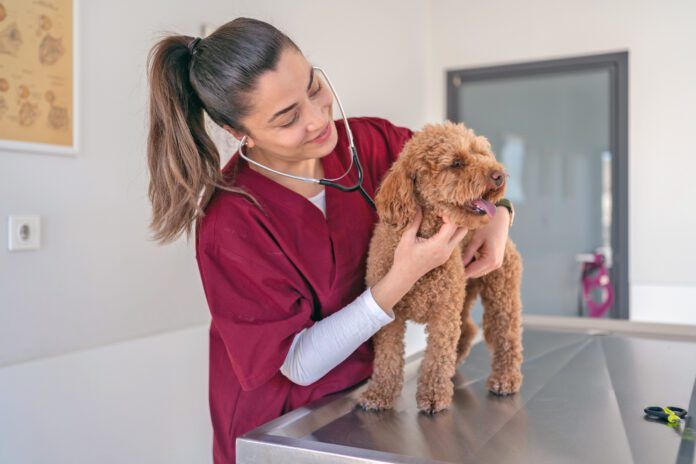
Learning your dog’s normal vitals – temperature, pulse, and respiration – is useful for detecting health problems or tracking your dog’s response to medication. It is also good information to provide when calling your veterinarian or an emergency clinic to make an urgent appointment for your dog. And, with the crunch on emergency clinics, the more information you can provide over the phone, the more efficient your veterinary visit will be.
Normal Heart Rate for Dogs
The normal heart rate for dogs is 70 to 120 beats per minute. This is what is called a “resting” heart rate, which is how fast your dog’s heart beats when he is just hanging out. Stress and exercise will both cause the heart to beat faster.
Large dogs tend to have a heart rate on the lower end, while small dogs have a faster resting heart rate. Your dog’s fitness also will impact his resting heart rate. Extremely fit, athletic dogs tend to have a slower resting heart rate. Obesity increases the heart rate and the chance of heart disease in dogs.
You can evaluate the heart rate for dogs a couple of different ways. A stethoscope is fantastic, but you probably don’t have one lying around (you can purchase one for less than $25). Instead, try placing your hand over the lower left side of your dog’s chest just under his left elbow to feel his heartbeat. This may be difficult in chubby dogs. Count the number of beats that you feel in 15 seconds, then multiply that number by 4 to get the beats per minute.
You also can feel your dog’s pulse. The inside of the thigh is a great spot to feel a dog’s pulse, or you may be able to feel it on the back of his carpus (wrist).
A heart rate that is abnormally too high or too low should cause you to seek veterinary attention.
Normal Dog Respiration Rate
The normal dog respiration rate is 15 to 30 breaths per minute. Once again, these number are for a “resting” rate. Exercise and stress can cause your dog to pant more rapidly.
To evaluate your dog’s respiration rate, wait until he settles on his own in a position of his choice. Then watch as his sides expand and contract with each breath. Each in and out counts as one breath. Count the number of breaths he takes in 15 seconds, then multiply that number by 4 to get the breaths per minute.
If your dog is panting, wait until he stops panting to count his respiration rate.
Normal Dog Temperature
The normal dog temperature is 100°F to 102.5°F. Knowing his normal body temperature will help you gauge if he has a fever. The most accurate way to take a dog’s temperature is with a rectal thermometer. I recommend buying a digital thermometer (they are much faster than mercury thermometers, plus safer if broken) and clearly labeling it for dog use only so it isn’t confused with your human thermometer.
An Open Letter to Craigslist and Facebook:
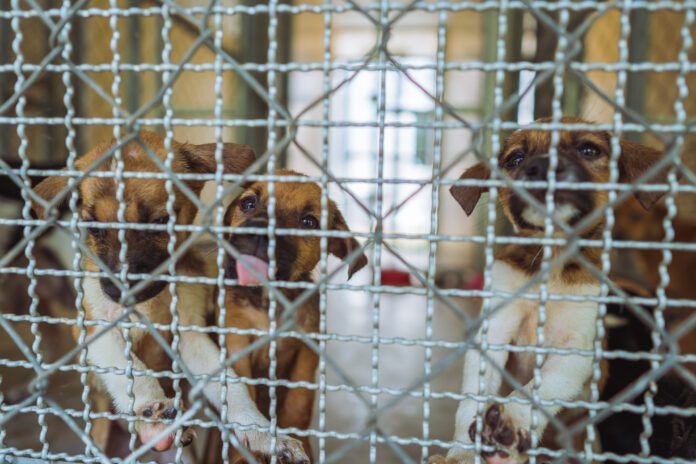
Dear Craigslist and Facebook,
Please stop helping people sell dogs on your sites. Oh, I know, you say you don’t allow these sales – that these activities are prohibited by your terms of service – but you do absolutely nothing of value to stop them. Backyard breeders wouldn’t be able to succeed without you!
Facebook, when I search your site for “puppies for sale,” I do get a warning page that says, “Are you sure you want to continue? This search may be associated with posts that encourage harmful behavior to animals. Animal abuse and the sale of live animals between private individuals is not allowed on Facebook.”

But the two options from that page are “Continue” or “Learn more” – and if I click on “Continue,” I am served up a variety of pages from which I can shop for puppies! That’s an incredibly useless warning.
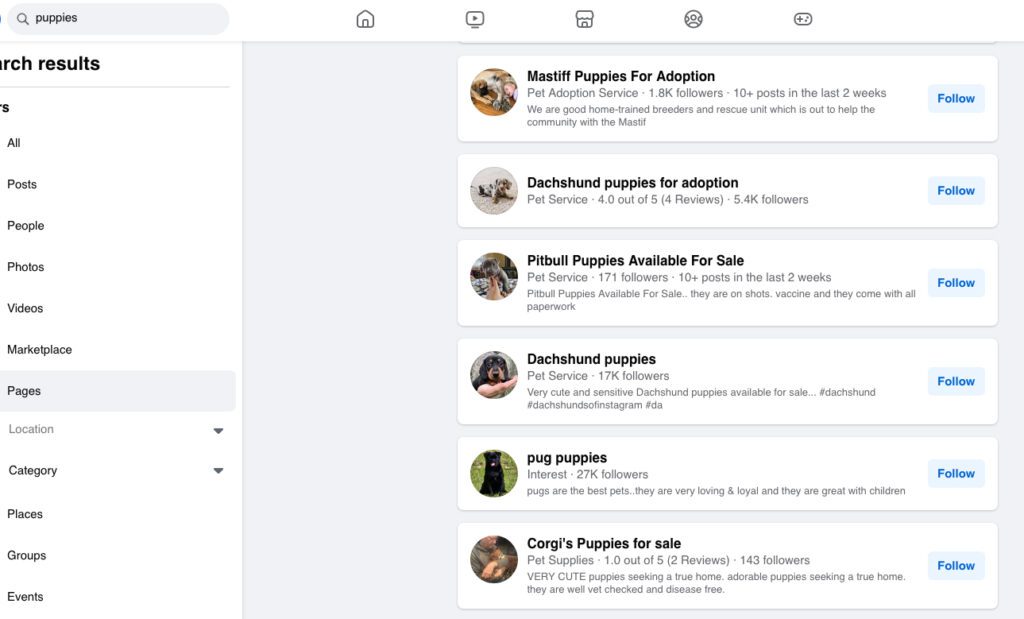
Craigslist, I know that you allow other users to monitor and “flag” posts from breeders, but seriously, that’s a joke. It would take an army of volunteers working around the clock to flag the ads for puppies appearing in the hundreds of local craigslist pages in the U.S. Also, each ad needs to be flagged numerous times before it gets removed; why not just remove the entire “pets” category?!
I’ve seen it mentioned on other forums that the “pets” page on craigslist can be used for good, to help people rehome individual animals. Unfortunately, that’s just not how the page is used by the vast majority of users, despite the fact that everyone who sells puppies now asks for a “rehoming” fee. Give me a break: These pages are a cesspool of ads for breeders, plain and simple.
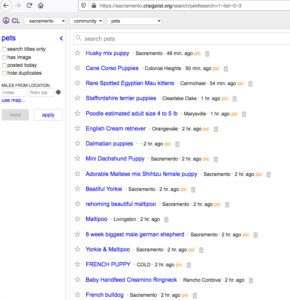
Note that I’m not against breeding altogether – but breeders who are truly responsible produce such a small number of puppies that they have long waiting lists of buyers; they don’t have to advertise to find homes for the far-too-many pups they force their females to churn out.
Also, I would guess that almost every dog or puppy who gets sold through craigslist or Facebook ends up reproducing. Most states have legislation requiring that shelters and rescues adopt out only animals who have been spayed or neutered. There is no such requirement for buying a puppy from a breeder someone finds on Facebook or craigslist, and these surgeries are expensive. Also, the people who go puppy shopping through these sites are largely inexperienced owners who don’t know how to responsibly shop for a dog; they probably aren’t aware of how much spay/neuter surgery will cost, or when it should be performed – and don’t know how to prevent their new dog from reproducing in the absence of such surgery!
Are there “good” breeders advertising their wares on Facebook and craigslist? I don’t know anyone who would answer “yes” to this question. These are people who are straight-up using their pets for income. While some have improved their “professionalism” to the extent that they can take decent pictures of their merchandise, many more show puppies growing up in squalid, dirty environments to mothers that look unhealthy and unloved.

And if you need even one more reason to stop the flow of income to craigslist and Facebook breeders, please go visit any “open admission” municipal shelter near you – not a pretty, well-funded “limited admission” shelter, but the kind that is legally required to take in all the unwanted dogs in an area. Ask how many kennels they have (what number of dogs the facility was designed to hold) – and how many they are actually holding. (Hint: It’s gotten really bad in the past few years since covid; every shelter in the country is screaming about too many dogs and not enough adopters, which is what makes these ads for backyard breeders on your sites just that much more galling.)
PLEASE, shelter and rescue workers and volunteers are BEGGING you: Put an end to these ads. Ban these pages. Without free advertising and a ready market for their puppies, people will be forced to slow or stop breeding (after a glut of surrendered puppies and breeding animals end up in the shelter, of course).
PS: If for some reason, you just can’t bring yourself to cut off these loathsome users, here’s another idea: Charge a pretty penny for the ads, and then donate the income to nonprofit spay/neuter providers. If there were free spay/neuter surgery available to anyone who wanted it for the dogs they bought from an ad they saw on Craigslist or Facebook, there would be MANY fewer dogs being given away, abandoned on the streets, and surrendered to shelters.
Do Dogs Really Watch TV?
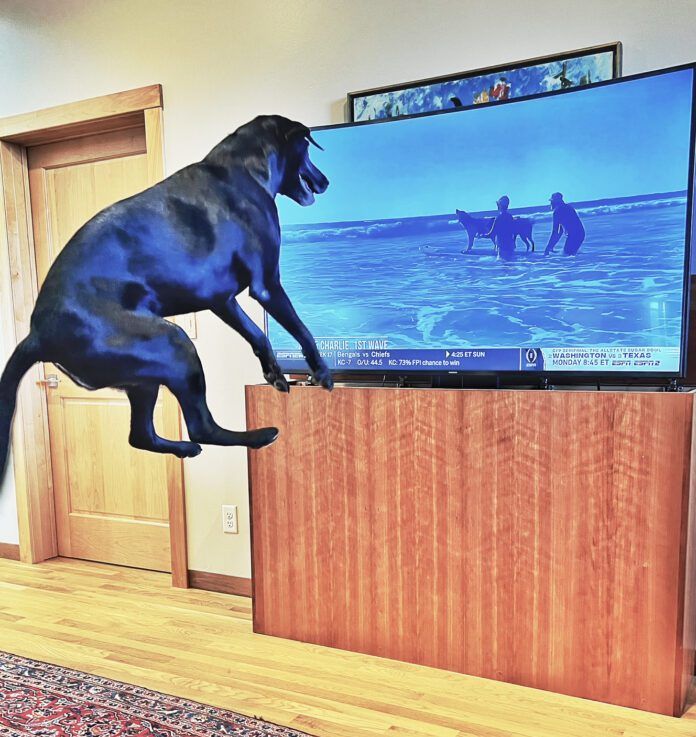
Dogs’ vision is a little different from ours. Their eyes have more rods than cones, so they are more sensitive to motion and have better night vision than humans. Dogs experience colors differently, too. They are more likely to notice the contrast between blue, green, and yellow objects, while red and white are less interesting to them. Despite these differences between dogs’ vision and ours, many dogs watch TV and recognize things that are of interest to them.
What do dogs like to watch on TV? There are lots of things on TV that we watch and dogs ignore, but most dogs recognize and will pay attention to other animals on the screen. For some dogs, this attention will be momentary and be limited to animals – especially dogs – who are running, barking, or engaged in activity, but other dogs will watch any animal doing anything on TV. If a program or commercial features high-pitched sounds, whistles, squeaky toys, or barks, it’s more likely to trigger a response.
Why do some dogs watch TV and others don’t? Young dogs, dogs with little TV experience, or dogs with strong prey drives may act as though animals on television are there in the same room with them, perhaps behind the TV, while some dogs realize right away that the images aren’t real. The fact that televised animals don’t smell like anything probably makes them less interesting, as dogs depend as much on their amazing sense of smell as their vision.
Your dog may have already demonstrated that televised animals are fascinating, but if that hasn’t happened yet, pay attention when pet food ads, commercials featuring dogs, or nature programs come on. If their colors are mostly blues, greens, or yellows, the action should capture your dog’s attention. Look for focusing eyes, alert expressions, changes in posture, head tilts, tail wags, or expressive sounds like growls, barks, or whines. You’ll be able to see whether your dog is interested, enjoying herself, uncomfortable, or indifferent.
Should you leave the TV on for your dog?
That depends on your dog and the programs. Some veterinarians discourage the practice because they have seen dogs who have injured themselves while chasing something on the screen or dogs who have been frightened, confused, or stressed by sights and sounds. Action movies may interest dogs because of their motion, but dogs are less likely to enjoy explosions, fireworks, arguments, or gunfire. Make it easy for your dog to stay or leave the TV area while you’re away. Behavioral experts remind dog owners that televisions can’t substitute for human companionship, but familiar sights and sounds may help dogs relax or entertain themselves during the day.
There is even a TV channel for dogs. As the DogTV website explains, “We’ve worked with experts like Professor Nicholas Dodman at Tufts University, Niwako Ogata of Purdue University, and organizations like the Center for Canine Behavior Studies to learn from their observations.” The channel’s colors and high number of frames per second coordinate with canine vision, and its offerings range from stress-reducing scenes of dogs relaxing to dogs enjoying more stimulating activities, such as surfing at the beach.
Apple Cider Vinegar for Dogs
Browsing through Internet postings about the benefits of apple cider vinegar for dogs will likely give you pause. Some laud it as a wonder product for everything – including curing cancer! Then you find the naysayers, who cite the FDA’s stand that apple cider vinegar has no nutrients. Of course, you already realize the truth is somewhere between.
It won’t cure cancer, but some research shows it shrinking tumors. Apple cider vinegar will not cure diabetes, either, although it’s been shown to help with blood sugar control.
The FDA is correct: apple cider vinegar contains only trace amounts of vitamins and minerals, except potassium. ACV has 11 grams of potassium in a tablespoon. But despite not being packed with essential nutrients, ACV does have health benefits for people and animals. The strong antioxidant and antibacterial qualities of apple cider vinegar is enough reason to include it in your dog’s care regimen.
Apple cider vinegar is made from just apples and water, making it completely safe for dogs. It is slightly acidic, with a pH of 3.1 to 5, which gives it properties that can soothe a dog’s overly alkalized digestive tract. Add a teaspoon of ACV to your dog’s water bowl and see if he’ll drink it! (Explained in detail later.)
For topical use, create an apple cider vinegar rinse for after your dog’s bath, as a remedy for irritated skin or a dry coat (1 cup ACV per 2-4 cups water). It’s common for dogs to get yeast infections in their paws; soaking your dog’s paws in ACV will relieve that too. When diluted and added to a spray bottle, apple cider vinegar is a strong disinfectant and even works as a mild flea repellent. See more ways you can use apple cider vinegar for dogs below.
11 Ways Dog Lovers Can Use ACV
So, how much can apple cider vinegar benefit your dog? Quite a bit, actually, provided you are sensible about your expectations. Apple cider vinegar may help dogs with:
1. Itchy, flaking skin and dull coats
2. Relief from hot spots
3. Repelling fleas
4. Keeping a dog’s ears clean, lessening the chance of infection
5. Improving digestion by balancing pH levels in a dog’s body
6. Ridding itchy paws and skin of bacteria
7. Relieving muscle soreness in older or active dogs
8. Rinsing soap residue or offensive odors from your dog’s coat
9. Preventing urinary tract infections (UTIs)
10. Helping relieve bladder stones in dogs
11. Fighting yeast infections on dogs’ paws
12. Diluting pet stains and odors in the home
Apple cider vinegar is made from apples/apple pectin. All vinegars are made from a liquid containing sugar, so apple vinegar begins as water and apples. When exposed to air, yeasts can grow, which cause the sugar to ferment and become alcohol. As it continues to ferment, natural (or added) acetic acid bacteria turn the alcohol into acetic acid, which is the main component of vinegar. Acetic acid is what gives vinegar its taste, smell and benefits. The word “vinegar” means “sour wine”, and indeed, red wine vinegar is simply red wine that’s been acetified.
Apple Cider Vinegar for Dogs: Proper Dosage
You’re familiar with apple cider vinegar as an ingredient in recipes, like salad dressings, dips, and drinks. It’s a healthy choice.
Although research on apple cider vinegar’s benefits is minimal, the test of time has made it a viable alternative for a number of everyday physical complaints and problems. Most experts agree that its documented human benefits also help dogs.
As is often the case, the exact dosage isn’t cast in stone, and you may need to experiment. Some people add it to food, at a rate of one teaspoon to one tablespoon for a 50-pound dog. Never feed straight apple cider vinegar. If you don’t see the desired benefit within 30 days of feeding apple cider vinegar, chances are it’s not working for that problem.
Many dog owners add it to the dog’s water bowl, but start with a small amount – a tablespoon in a big bowl of water, perhaps – and watch to make sure your dog still drinks the water readily before increasing the amount. However, when you add anything to water, be make sure you make a second bowl of plain water available, too. The last thing you want to do is curb your dog’s daily water intake.
That said, dogs who are used to the taste of apple cider vinegar in their water often find it easier to adjust to new water tastes, such as when traveling.
Apple cider vinegar helps digestion by increasing the stomach’s acid levels, which results in better absorption and fewer gastrointestinal symptoms like burps and gas. Apple cider vinegar promotes the growth of beneficial bacteria in the dog’s digestive tract. Some dog owners mix it into plain yogurt.
Research shows it lowers post-meal glucose levels in humans, and it can relieve constipation – of course, that means overdo it and you may face a messy outcome.
A dose of apple cider vinegar can help with minor bladder inflammation, too, but it won’t cure an actual urinary tract infection. That needs immediate veterinary attention.
Since apple cider vinegar has antimicrobial properties, mainly antibacterial, it may interrupt the development of some infections. Feeding it may help combat teary eye stains.
Be careful, though. You can feed too much apple cider vinegar. The first early symptom is usually vomiting. If you ignore that, you may eventually find increased tooth decay and decreased bone health. It can also irritate the mouth and linings of the esophagus.
ACV is a Safe, Reliable Disinfectant
Vinegar is a well-known cleaner and mild disinfectant. (Some people won’t use anything but white vinegar to clean their windows.) Apple cider vinegar’s cleansing and disinfecting qualities can be good for your dog, too. (If you’ve never used it before or your dog is the “sensitive” sort, do a 24-hour spot test before applying it to the dog’s entire body. Signs of allergy would include vomiting, reddish skin, and/or itching and scratching.)
Diluted 50-50 with water and applied using a sprayer or a sponge, an apple cider vinegar rinse will remove leftover soap residue after a bath, help alleviate dandruff and itchy skin and leave the coat shiny and soft. To use it as a dandruff preventative, rub the diluted solution into the dog’s skin just prior to giving him a bath (never do this without having done the 24-hour spot test), then wash it off in the bath.
If you’re like most of us, and prefer to minimize your dog’s exposure to chemicals, apple cider vinegar might be the answer for a natural flea and/or flying insect repellent. While it’s not the answer for a flea infestation, it does a good job combatting small incidences, such as added protection on a walk during heavy bug season.
Apple cider vinegar has a cooling sensation, making it a good choice for small topical problems, like burns, bruises, and hot spots. Be careful, though. If the wound is at all open or raw, apple cider vinegar will sting!
It’s especially useful to minimize itchy feet and ears. Thoroughly soak the dog’s paws in a vinegar-water mix. Use cotton swab or gauze pads soaked in the mixture to clean ears.
A massage with a diluted ACV mix will go a long way toward relieving strained muscles from overactivity. Warm the solution slightly for added benefit.
Although you may read articles to the contrary, apple cider vinegar is not a strong choice for treating lice, fungus, warts, or ear infections. Your best bet in these situations is veterinary attention!
Since ACV is a great deodorizer and safe for your dog, you can use it to disinfect dog toys and bedding. Spray it anywhere you need odor control and/or a gentle disinfectant.
What Kind of Vinegar is Best for Dogs?
Like most things nowadays, the choices for vinegar border on over-whelming. You’ll see words like raw, natural, unpasteurized, organic, and unfiltered. There are also white vinegars, balsamic vinegars, and wine vinegars. We’re looking at apple cider vinegar, which is usually an amber color (light or dark) and made from apples.
For health uses, choose raw, unpasteurized apple cider vinegar, preferably in a glass bottle. Why?
“Raw” or “unfiltered” apple cider has the “mother” in it, which is the name of the brown stuff at the bottom of the bottle. These are fermentation leftovers, and they include all the good live bacteria and enzymes that give the product its health benefits. Of course, if you’re using this vinegar for cleaning, you want to strain this out before you use it. (Can’t stand the look of the debris in the bottom? Then look for “filtered” apple cider vinegar, which was strained to remove the debris.)
“Unpasteurized” is recommended because the process of pasteurization – a heat process – can kill the good bacteria we want. If you’re willing to spend the extra buck or two, choose an organic apple cider vinegar. No reason not to avoid pesticides when you can, especially if your dog is going to eat the product.
Glass containers do not pose the risk (as plastic bottles can) of harmful chemicals leaching into the product.
Apple Cider Vinegar Controversy
In a past Whole Dog Journal article, we discussed some of controversies surrounding apple cider vinegar.
Not everyone agrees that apple cider vinegar should be given to dogs. Pat McKay, canine nutritionist and author of the natural diet book, Reigning Cats and Dogs, doesn’t like cider vinegar, and she doesn’t mince words; she calls it poison.
“I believe Peter J. D’Amado is on the right track in his book, Eat Right for Your Type,” she says. “Each of the human blood types has an ideal diet, and the diet recommended for type O most closely resembles the meat-based diet on which dogs evolved. D’Amado warns that cider vinegar is very damaging to this type, and I agree with him. I happen to be a type O, and apple cider vinegar has always made me feel miserable. I never knew why until I read his book. I believe dogs have a similar reaction because even small quantities of vinegar can throw their bodies’ pH out of balance.”
Marina Zacharias, pet nutritionist and publisher of Natural Rearing newsletter, shares McKay’s concern about pH levels. She recommends that owners have their dogs’ blood and urine tested before adding cider vinegar to their daily diet.
“If a dog’s system is too alkaline,” she says, “cider vinegar will help, but by itself it may not correct the problem and the dog will need additional support. If the dog’s system is too acidic, which is a condition called acidosis, the result can be stress on the pancreas and adrenal organs, which are important regulators of blood pH levels. The symptoms of acidosis range from diarrhea or constipation to low blood pressure, hard stools, and sensitivity of the teeth and mouth. Often we see acidosis in combination with other conditions, such as kidney, liver, and adrenal problems. In certain cases, adding vinegar to a dog’s food could aggravate an already-existing problem in the body.”
Are adverse side effects likely? If a dog is allergic to vinegar, he might vomit, scratch furiously, or have a similarly obvious reaction. Although there is much debate on this issue, some believe that vinegar may worsen chronic ear infections. Long term use of ACV on dogs who are sensitive to it has been associated with tooth decay and bone deterioration. Too much could also inflame a dog’s mouth and esophagus.
“You have to apply common sense,” says Sue Ann Lesser, D.V.M. “Most dogs are notoriously over-alkaline, and cider vinegar will help them. If a dog’s system is overly acidic, you’ll see clinical signs, such as obvious symptoms of illness. I know quite a few dogs that take cider vinegar according to the directions in Wendy Volhard’s book, and I don’t know of any that have had bad results.”
In her book The Holistic Guide for a Healthy Dog, author Wendy Volhard recommends using pH paper strips to check the dog’s first morning urine. “If it reads anywhere from 6.2 to 6.5, your dog’s system is exactly where it should be,” and no ACV is needed, she says. “But if it is 7.5 or higher, the diet you are feeding is too alkaline, and apple cider vinegar will reestablish the correct balance.”
Volhard recommends one teaspoon to one tablespoon twice daily for a 50-pound dog.
Cynthia Foley is a freelance writer in upstate New York. She competes with her Papillons in dog agility.


